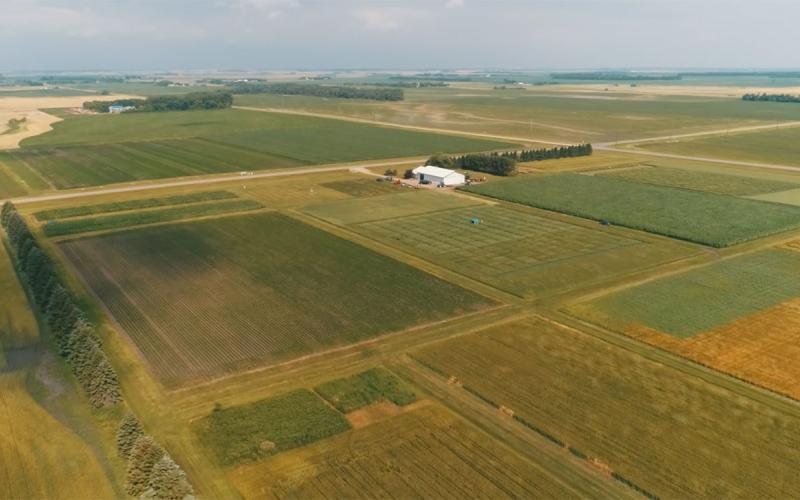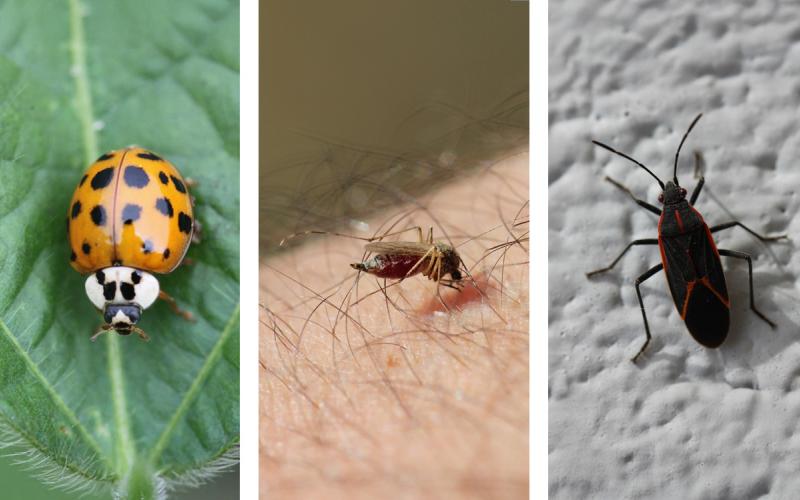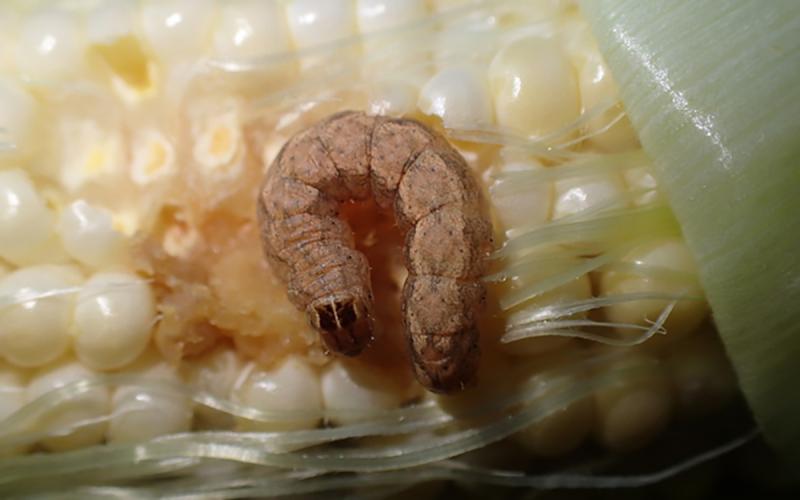Tweets about European corn borer (Ostrinia nubilalis) caterpillars in the stems of conventional corn and feeding in the whorls of corn are crossing my Twitter feed. Unfortunately, there is a problem with some of these tweets. Not all of the caterpillars that are being identified as European corn borer caterpillars are actually European corn borer caterpillars!
The tweets about caterpillars present in the stalk of the corn and identifying them as the European corn borer are correct. As the number of conventional acres planted in South Dakota increases, we will more than likely continue to see an increase in European corn borer reports. However, the other Tweets about caterpillars feeding on the whorl are actually of the corn earworm caterpillar, Helicoverpa zea.
European Corn Borer
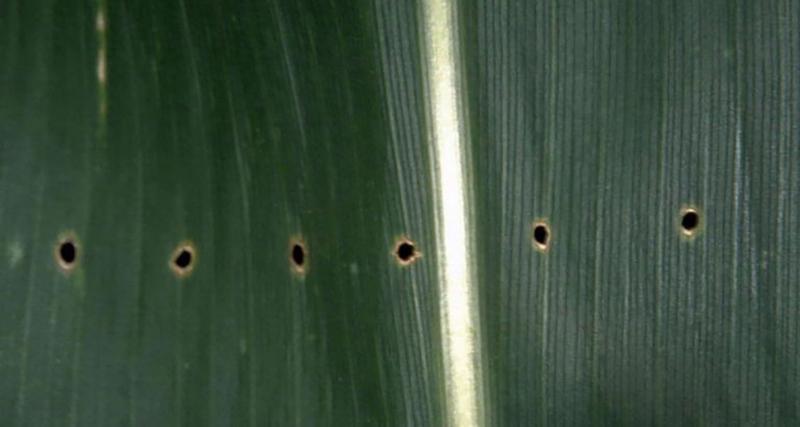
During their lifecycle, European corn borer moths lay their eggs on the underside of corn leaves. When the caterpillars hatch, they initially feed on the leaf and then journey into the whorl. Initial feeding will often appear as if the epidermis of the leaf has been stripped away. As they mature and feed in the whorl, the caterpillars leave behind the characteristic shot-hole feeding injury (Figure 1). However, these caterpillars don’t stop in the whorl, but will continue down the whorl and bore into the stalk itself (Figure 2).
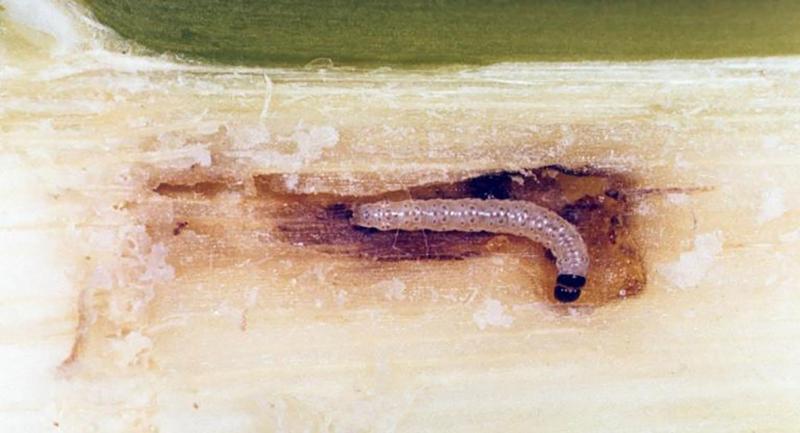
In addition, European corn borer caterpillars have a dark brown head capsule with a light brown or tan body (Figure 3). Small brown circle markings can often be observed on each segment of their body. These caterpillars can be observed on the leaves when they are recently hatched and occasionally in the whorl. However, they are almost always found within the corn stalk where they feed and reduce stalk integrity. The feeding often results in lodging and weakened shanks (i.e., when ears are present during feeding).
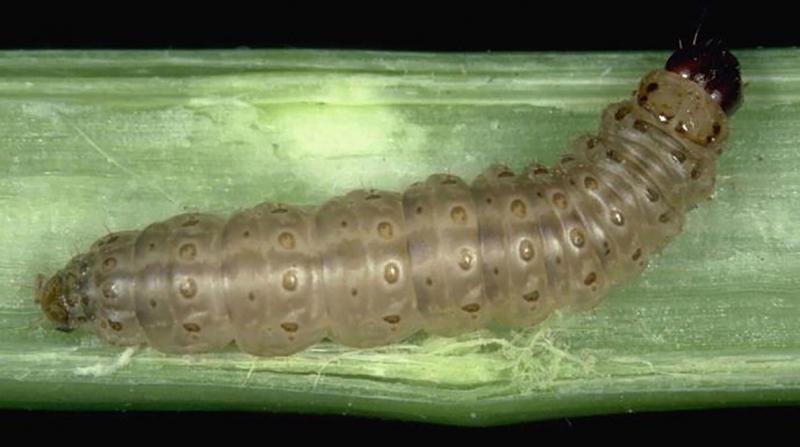
Corn Earworm
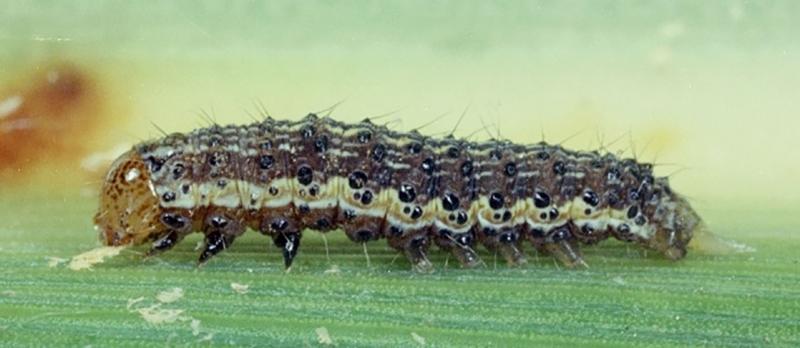
The corn earworm caterpillars are highly variable in color, and can range from yellow, green, pink, or black. They will almost always have alternating light and dark stripes on their body and small spines (sometimes they look like little hairs) across the surface of their bodies. With the exception of newly hatched corn earworm caterpillars, they will always have a yellow to brown head capsule (Figure 4).
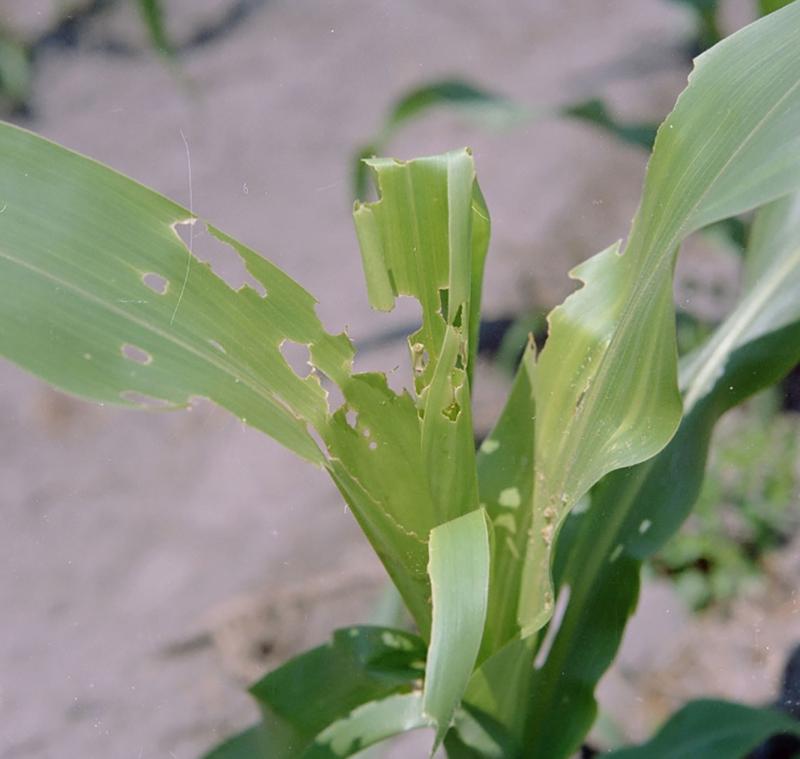
During the first generation, corn earworm caterpillars feed in the corn whorls or on nearby leaves. This feeding often results in somewhat irregular shaped holes with jagged lines (Figure 5).
Second generation caterpillars feed on corn silks, and eventually bore into the ear through the silk channel to the ear tip where they feed on developing kernels (Figure 6).
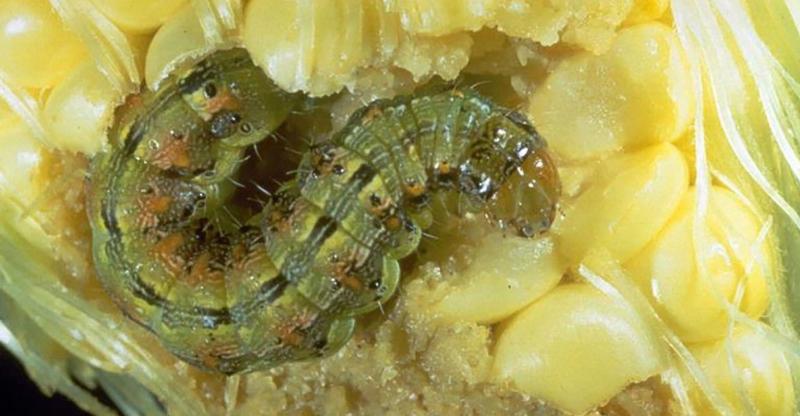
What Are the Differences Between These Species?
Table 1 compares the key identifying characteristics between these two species.
| European Corn Borer | Corn Earworm | |
|---|---|---|
| Head Capsule | Dark brown | Tan, yellow |
| Body Color | Tan, relatively smooth | Wide range, but with stripes and spines |
| Primary Feeding Location | Inside stalk |
1st Generation: Whorl 2nd Generation: Developing ears |
